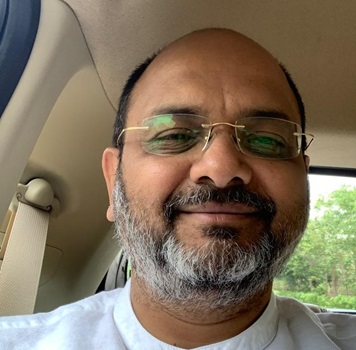.png)

Sanjay Mansabdar teaches finance at Mahindra University in Hyderabad. He brings 30+ years of global experience in derivatives trading and product design, including senior roles at J.P. Morgan, Bank of America, and ICICI Securities.
June 21, 2025 at 5:39 AM IST
The cheer around India’s demographic dividend has grown even louder, but the ground reality tells a more sobering tale. Entry-level job cuts at IT majors, tepid campus placements even at top institutions, and a growing reliance on higher studies as a delaying tactic—these are not isolated developments. They reflect a systemic issue: the Indian economy is failing to absorb its youth meaningfully.
Agriculture continues to absorb more than half the workforce while contributing a fifth of the GDP. Globally, the picture is equally grim. Microsoft’s mass layoffs and the rise of artificial intelligence further erode the security of conventional white-collar jobs. Immigration, once a fallback, is increasingly stymied by rising nationalism worldwide. From my vantage point as a business school faculty member, I sense growing unease. Students are not just uncertain, they are fearful.
Growth Engines
The demographic dividend is often paraded as a key bulwark of India’s robust macroeconomic fundamentals. That is only one side of the equation. Where does this demographic bounty find gainful employment to contribute meaningfully, earn incomes, and spend to boost output? This must take centre stage if the dividend is to indeed materialise.
Fortunately, several windows of opportunity exist. Global supply chains are being reconfigured and India enjoys a relatively neutral position amidst trade tensions. This is the moment to embed Indian manufacturing deeper into global value chains. Manufacturing, done right, has deep employment linkages and can generate jobs at scale.
Tourism is another underexploited area. The industry itself is inherently AI-proof and people intensive, making it an ideal focus area for job creation. India has an abundance of history, monuments, biodiversity, and cultural richness to be a world-class tourist destination. But realising this potential requires moving beyond glitzy ad campaigns and investing in the infrastructure and services that underpin quality-driven travel experiences.
Medical tourism presents a similar opportunity. Soaring global healthcare costs and dwindling insurance coverage are opening the doors for cost-effective, high-quality care. India can be a global hub for this—if quality, scale, and patient trust are prioritised.
Then there is AI itself—long on potential but short on real-world implementation outside a few areas. India, with its deep coding and engineering base, could lead implementation across sectors.
Why should we not aim for India to become a global financial center on par with Singapore or Tokyo? India already boasts a rich financial ecosystem: innovative payment systems, active capital markets, and a diverse set of institutions. What it lacks is the coordinated policy push and trust-building required to make such ambitions a reality.
Policy Friction
What are the missing links in this vision?
The answer lies in two systemic gaps: policy coherence and ease of doing business.
Manufacturing success stories are emerging, yes. But industrial policy often remains fragmented, and plagued by regulatory complexity. India’s abysmal global rankings in ease of doing business are no mere statistical artefact. Entrepreneurs continue to face frictions that kill enterprise before it scales. Bureaucratic inertia, unpredictable rules, and a lack of regulatory clarity erode investor confidence. The private sector cannot drive transformation unless the state demonstrates both competence and trust.
Policy coherence requires coordinated efforts towards defined end goals, along with the resources to enable these. Tourism, for instance, is not just about monuments. It’s about seamless visas, dependable transport, hotel capacity across price points, and most importantly, personal safety. These require multiple arms of government working in tandem—not a single ministry putting out glossy brochures.
The same holds true for manufacturing. Offering production-linked incentives is not enough if land, power, and labour policies aren’t synchronised. There are models within India that prove coordinated policymaking is possible. The GST rollout, despite its imperfections, demonstrated pan-India policy unification. Defence production, too, has seen relative alignment in objectives and execution. But these are exceptions. For India to truly unleash its potential, this model of convergence must become the rule.
The FDI data should serve as a red flag. If Indian entrepreneurs are increasingly investing abroad, it raises fundamental questions about faith in the domestic business environment. Policymakers would do well to reflect, not spin. At stake is more than capital flight—it is a silent vote of no-confidence.
India’s youth are educated, hungry, and hopeful. Without a real ecosystem to channel that energy, the dividend will become a disaster. Jobs must become the centrepiece of national economic strategy—not as a rhetorical flourish but as a measurable priority. This requires trust, transparency, and tenacity.
If the demographic dividend is to be earned, not inherited, then India must stop relying on potential—and start executing a coherent, collaborative plan. The bill is coming due. We must pay it with jobs, or pay for it with consequences.




